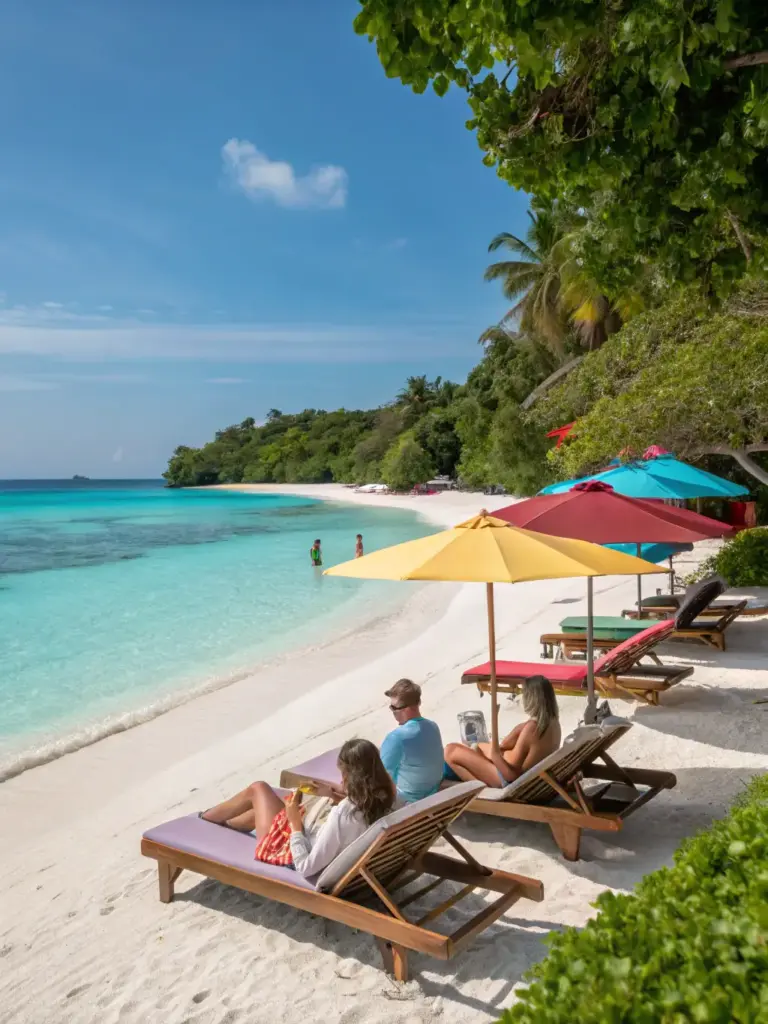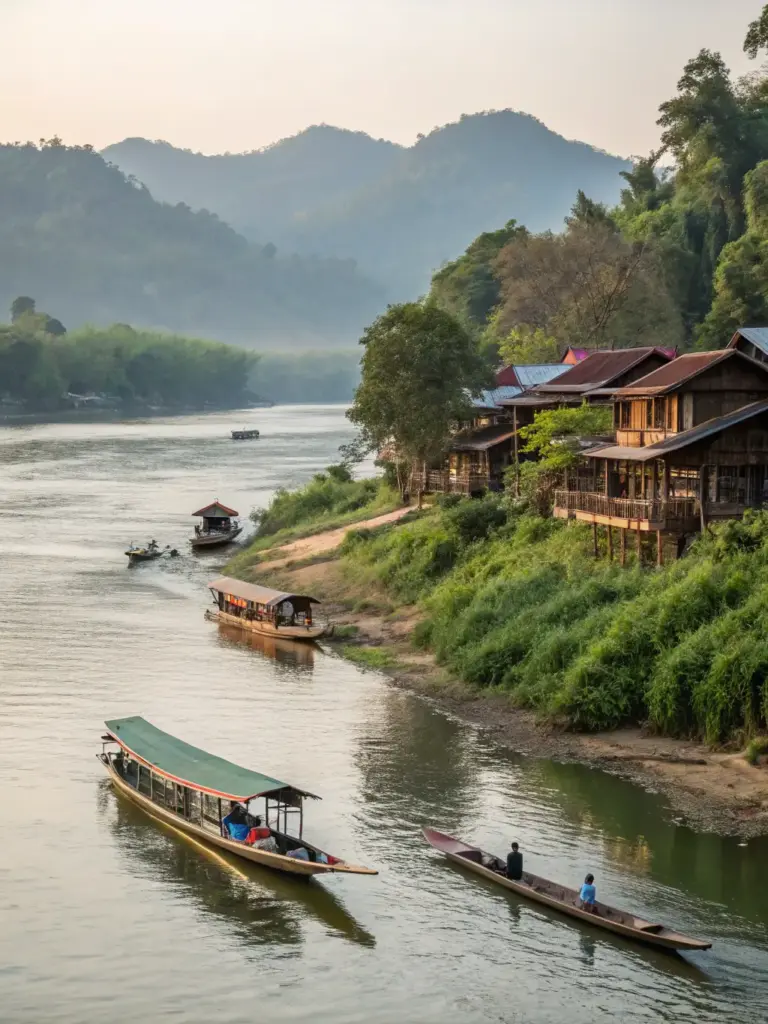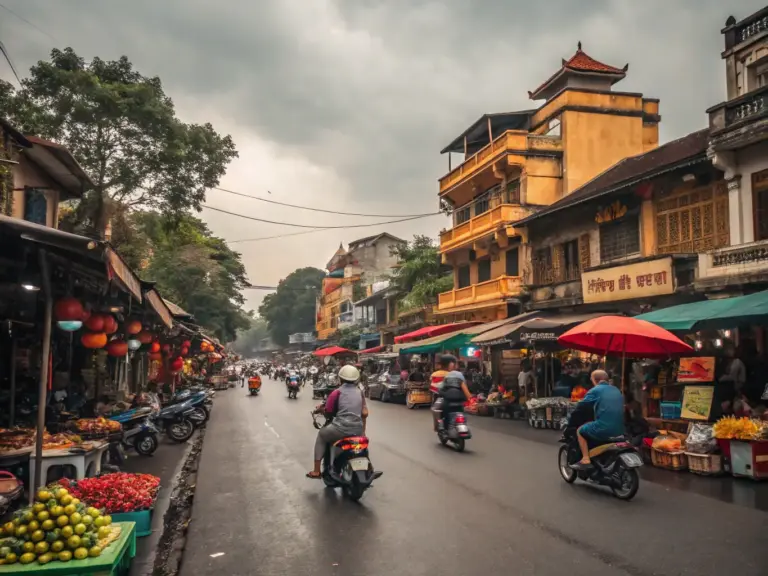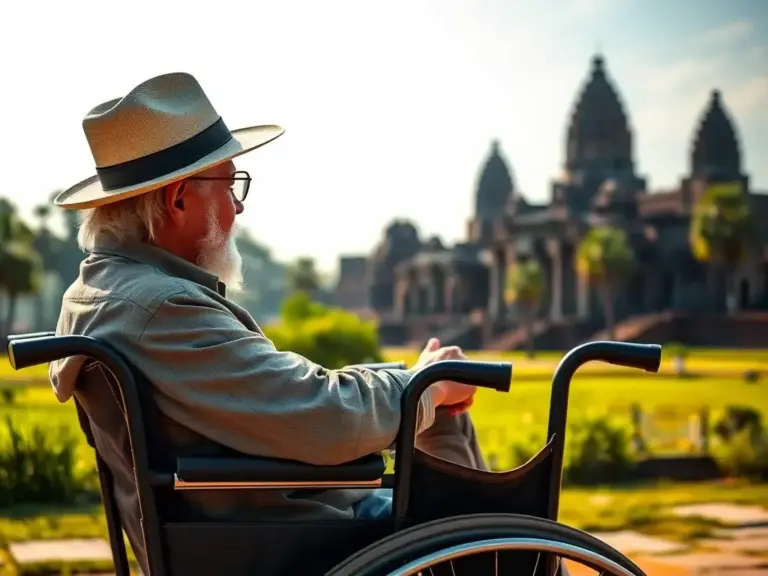The thought of exploring new countries and experiencing different cultures is exciting. But before you can enjoy that freedom, you’ll need to sort out your travel documents. Knowing what visas are and why they matter can feel complicated, yet it’s essential for any international trip.
We’re here to make understanding visas and other travel paperwork much simpler. This guide will help you prepare for your 2025 adventures, making sure you have all the necessary information for smooth travels. Let’s get you ready for your next journey abroad without the stress.
What’s the Big Deal About Visas Anyway?
So, you’re planning an international trip. You’ve picked your destination and maybe even started dreaming about the local food. But then you hear about visas, and suddenly, things feel a bit more complicated. What exactly are visas, and why do they matter so much? Simply put, a visa is official permission from a country to enter, stay in, or pass through its borders. Think of it like a special stamp or document in your passport that says, “Yes, you’re welcome here, under certain conditions.” Countries require visas for several important reasons, including national security, managing who comes in and out, supporting their economy, and sometimes as part of agreements with other nations. You’ll find that visa requirements change a lot depending on your nationality and where you want to go.
Types of Visas: Finding Your Fit
Just as there are many reasons to travel, there are many types of visas. Each one serves a specific purpose, designed to match your travel goals. Knowing which type you need is the first step in a smooth application process.
- Tourist Visas: These are for leisure travel. If you’re planning a vacation, visiting friends or family, or simply exploring a new culture, a tourist visa is usually what you’ll need. For example, if you’re traveling from the U.S. to Thailand for a holiday, you might apply for a tourist visa.
- Business Visas: If your trip involves work-related activities such as attending meetings, conferences, or short-term training, a business visa is appropriate. This isn’t for long-term employment, but rather for short stints that benefit a company or project. An engineer flying to Germany for a week-long technical conference would likely use a business visa.
- Transit Visas: Sometimes, your journey involves a layover in a country even if your final destination is somewhere else. A transit visa allows you to pass through that country, often for a very short period, without officially entering it for a longer stay. Imagine a flight from Brazil to Japan that stops in Canada for a few hours; you might need a transit visa for Canada.
- Student Visas: Dreaming of studying abroad? A student visa is specifically for individuals accepted into educational programs in a foreign country. These usually allow for longer stays than tourist visas and often come with specific requirements related to your enrollment. An American heading to Paris to study French for a semester would apply for a student visa.
- Work Visas: If you’ve secured a job in another country, a work visa is your gateway. These visas are usually more challenging to obtain, requiring sponsorship from an employer and proof of specific skills or qualifications. A doctor moving from the UK to Australia for a new medical position would apply for a work visa.
Do You Even Need a Visa? The Visa-Free Reality
It might surprise you, but not every country requires every traveler to have a visa. The world of international travel includes a concept known as visa-exempt travel. This means that, depending on your nationality, you might be able to enter certain countries without needing to apply for a visa in advance. These arrangements usually stem from strong diplomatic relationships or reciprocal agreements between nations. For instance, many European Union citizens can travel freely between member countries without a visa, and U.S. citizens can visit many nations visa-free for short tourist stays.
 Photo by DΛVΞ GΛRCIΛ
Photo by DΛVΞ GΛRCIΛ
However, this doesn’t mean you can just pack your bags and go anywhere. Visa requirements are constantly changing, and what applies to one passport holder might not apply to another. Always check the specific entry requirements for your destination country based on your passport’s nationality. Do this well in advance of your trip, as application processing times can vary widely. Reliable online resources like government embassy websites or the International Air Transport Association (IATA) database can help you find the most up-to-date information. A quick search can save you a lot of hassle and ensure your travel plans stay on track.
Beyond the Visa: Essential Travel Documentation
Even if your destination grants you visa-free entry, or you’ve secured the perfect visa, your journey doesn’t end there. Other crucial documents, beyond just your passport and visa, are vital for smooth entry, a pleasant stay, and hassle-free departure. Think of them as your personal travel support team; they’re there to help you navigate unexpected situations and prove your legitimate travel intentions. These often overlooked items can make all the difference, providing authorities with necessary information and giving you peace of mind.
Your Passport: The Ultimate Travel ID
Your passport is more than just a booklet; it’s your definitive international identification. It proves your citizenship and your right to re-enter your home country. For any international trip, its condition and validity are paramount. Most countries require your passport to be valid for at least six months beyond your intended departure date. This often catches travelers by surprise, so check this rule for your destination well in advance.
You will also need enough blank pages for entry and exit stamps, or any visas you might acquire. A tattered or damaged passport might cause issues at border control, so keep it in good shape.
If you need to renew or obtain a passport, start early. The process typically involves completing an application form, providing proof of identity and citizenship (like a birth certificate), and submitting passport-sized photos. You can apply at designated government offices or post offices in many countries. Check your national passport agency’s website for specific details and processing times.
Paperwork Power-Up: What Else to Keep Handy
Travel is rarely just about your passport and a visa. There’s a whole array of other documents that can smooth your way through customs, confirm your plans, and save you from headaches. Having these items organized and accessible is a smart move.
Here are some important papers to consider:
- Confirmed Flight Itineraries: These prove your onward or return travel. Immigration officials often want to see that you have plans to leave their country.
- Hotel Reservations: Bookings show where you intend to stay, especially helpful for tourist visas or when questioned about your travel plans.
- Proof of Sufficient Funds: Countries want to ensure you can support yourself without becoming a burden. This might include recent bank statements, credit card copies, or even travelers’ checks.
- Travel Insurance Details: An insurance policy gives you a safety net for medical emergencies or unexpected travel disruptions. Keep your policy number and emergency contact information readily available.
- Invitation Letters: If you are visiting friends or family, or attending a specific event, an invitation letter can clarify your purpose of visit.
- International Driving Permit (IDP): Planning to drive? An IDP, translated into multiple languages, validates your home country’s driver’s license abroad.
- Copies of All Essential Documents: Always make photocopies of your passport, visa, and other critical papers. Keep digital copies on your phone or in cloud storage, and store physical copies separately from the originals. This is a lifesaver if anything gets lost or stolen.
Health and Safety Documents in 2025
Your health and safety are paramount when traveling. In 2025, certain health documents remain key, especially for specific regions or if new global health concerns arise.
 Photo by Leeloo The First
Photo by Leeloo The First
For example, many countries in Africa and South America still require a Yellow Fever vaccination certificate if you are traveling from or transiting through an area where the disease is present. Always check the World Health Organization (WHO) guidelines and your destination country’s specific health requirements well before your trip. You might visit a travel clinic for advice on other recommended vaccinations, such as for Hepatitis A or Typhoid.
Beyond vaccinations, your travel health insurance card is a vital piece of personal safety documentation. It provides quick access to your insurance information should you need medical attention. Consider also carrying a card with emergency contact information, including details for family members and your country’s embassy or consulate at your destination. This simple step can provide crucial support in an unforeseen emergency.
Navigating the Visa Application Maze: Step-by-Step
Applying for a visa can feel like a complex puzzle. There are many forms, rules, and documents to put together. But with a clear plan, you can make this process much smoother. We will walk you through each step. Starting early and being very thorough with your application is key to avoiding stress.
Research is Your Best Friend
Before you fill out any forms, you need to know exactly what kind of visa you need. Each country has different types, and your travel purpose will determine which one is right for you. Do you plan to sightsee, attend a conference, or study? Your answer guides your next moves.
To begin your research, go straight to the official government websites of your destination country. Look for the embassy or consulate information. These sites provide the most accurate details on:
- Exact visa types available for your visit.
- Specific requirements for each visa.
- Application methods, whether online, in-person, or by mail.
Always use official sources. Third-party sites can offer general advice, but they might not have the most current information. Rules change, so double-check everything close to your travel date.
Gathering Your Arsenal: Required Documents for Visa Applications
Once you know your visa type, it’s time to collect your documents. Think of these as your “arsenal,” each piece important for a complete and strong application. Any missing or incorrect item can cause delays or even rejection.
Common documents you will likely need include:
- Valid passport: This is non-negotiable. Ensure it has at least six months of validity beyond your trip and enough blank pages.
- Completed visa application form: Fill this out carefully and honestly.
- Passport-sized photographs: Check the size, background color, and how recent the photo needs to be.
- Proof of travel funds: Show you can support yourself financially during your stay. This might be bank statements or a letter from your bank.
- Fight and accommodation bookings: These show your travel plans and where you will stay.
- Invitation letters: If someone is inviting you, they might need to write a formal letter.
- Travel insurance: Many countries require this to cover unexpected medical issues or travel disruptions.
- Country-specific documents: Some nations have unique requirements, like specific health certificates or even personal interviews.
Accuracy and completeness are vital. Double-check every detail. A small mistake can lead to big problems.
 Photo by Ekaterina Belinskaya
Photo by Ekaterina Belinskaya
The Application Process: Submission and Interview Tips
With all your documents ready, the final stage is submitting your application. This often happens in one of two ways. Many countries now use online portals, where you upload documents and fill out forms digitally. Other embassies or consulates require an in-person visit to submit your paperwork and sometimes for an interview. If mailing your application is an option, follow all instructions for postage and packaging precisely.
If an interview is part of your process, here are some tips to help you succeed:
- Dress professionally: This shows respect for the process.
- Be honest and direct: Answer all questions truthfully.
- Know your travel plans: Be ready to confidently explain your purpose of visit, where you will stay, and your return date.
- Bring all original documents: Even if you submitted copies, have the originals ready to show.
After submitting your application, you will usually need to pay an application fee. Keep your receipt. Many systems also provide a way to track your application status online. Check it regularly for updates. Patience is important during this phase, as processing times can vary widely depending on the country and visa type.
Common Pitfalls and How to Avoid Them
Even the most seasoned travelers can run into problems with their visas and documents. A tiny oversight can lead to a lot of stress, or even worse, a denied entry. We want your trip to be smooth sailing. Understanding the common mistakes and how to prevent them can save you from a major headache. Let’s look at how to avoid those annoying issues that can derail your travel plans.
The Dreaded Denials: Reasons Why Visas Get Rejected
Visa rejections are frustrating, but they often happen for very clear reasons. Most stem from simple mistakes or a lack of attention to detail during the application process. Knowing these pitfalls can help you avoid them.
Some of the most common reasons for a visa denial include:
- Incomplete applications: Many applications are turned down because a form is missing information or a required document is left out. Always double-check that every blank is filled and every document is attached.
- Invalid passport: Your passport might not meet the validity requirements, such as needing six months of validity beyond your trip. Or perhaps it is damaged.
- Misrepresentation: Providing false information or forged documents is a serious offense. This will almost certainly lead to a rejection and could impact future travel. Always be honest in your application.
- Insufficient funds: Countries need to know you can support yourself during your stay. If your bank statements do not show enough money, your application might be denied.
- Criminal record: A history of criminal offenses, especially serious ones, can prevent you from getting a visa for many countries.
- Overstaying previous visas: If you have overstayed a visa in the past, countries may see you as a risk and deny your new application.
The best defense against rejection is honest and careful preparation. Take your time, read all instructions thoroughly, and gather every piece of information requested.
Triple-Checking is Key: Before You Fly
You have your visa, your passport, and your bags are packed. It feels like you are ready to go. But before you head to the airport, take a moment for one final, crucial check of your documents. This last review can catch small errors that could ruin your trip.
Here is what you should review right before you leave:
- Passport validity: Does your passport meet the six-month rule for your destination? Are there enough blank pages?
- Visa details: Check every detail on your visa. Are the entry and exit dates correct? Is it the right type of visa for your travel purpose? Does your name match your passport exactly? Even a single misspelled letter can create problems.
Beyond checking, think about backup. Make copies of your passport, visa, flight itinerary, and any other important documents. Keep a digital set saved on your phone or in a cloud service. Also, pack physical photocopies in a separate bag from your originals. These backups are invaluable if your originals are lost or stolen while traveling.
Lost or Stolen Documents: What to Do Overseas
Losing your passport or visa while abroad is a traveler’s worst nightmare. It can feel overwhelming, but knowing the right steps can help you recover and continue your trip with minimal disruption.
Here is what to do if your documents go missing:
- Report to local police: This is the first and most important step. Get a police report number. Many embassies or consulates require this report to issue new documents.
- Contact your embassy or consulate: Reach out to your home country’s embassy or consulate in the country where you are traveling. They can help you replace your passport and advise on getting a new visa if needed. Keep their emergency contact numbers stored in your phone and written down.
- Use your copies: This is where those separate copies come in handy. Provide your embassy and the police with copies of your lost passport and visa. This will speed up the replacement process significantly.
Having a plan for lost documents offers peace of mind. It allows you to act quickly and calmly, turning a potential disaster into a manageable situation.
Conclusion
Getting visas and preparing your documents might seem like a lot of work, but thinking of it as an exciting first step toward your adventure changes everything. Start your planning early, double-check every requirement, and keep all your necessary papers organized. Doing this sets a solid foundation for stress-free international travel.
With proper documentation, you can explore the world feeling confident and calm. This peace of mind allows you to fully enjoy every new experience without worrying about unexpected travel hiccups. So, begin preparing for your next journey today.






